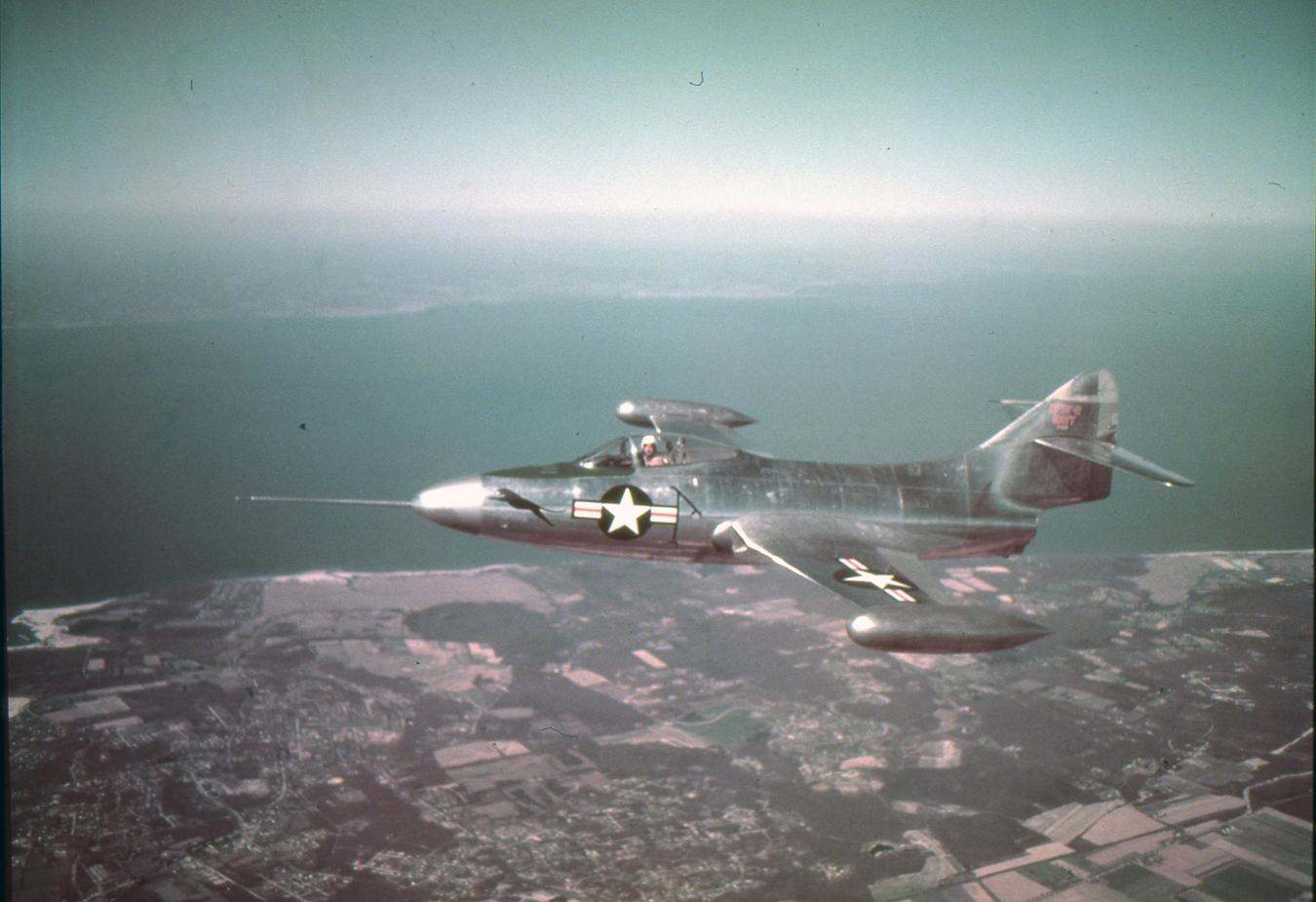F9F-2 Panther
First Flight:
The prototype XF9F-2 Panther made its first flight on November 21, 1947.
Performance:
A first-generation jet, the Panther was initially designed with four engines installed in pairs side-by-side on each wing before engineers settled on a single-engine configuration. The Rolls-Royce Nene power plant initially chosen for the jet enabled a top speed of 575 M.P.H., which far exceeded that of the propeller-driven F8F Bearcat that preceded it.
Design: The F9F exemplified one characteristic for which Grumman aircraft were known – ruggedness. Future astronaut John Glenn flew the airplane as a Marine Corps pilot during the Korean War, returning from one mission with a hole in his tail that he could put his head and shoulders through.
Landmark Service:
The F9F was on the front lines of the Korean War, the first jet age conflict. When war erupted in June 1950, the Panther was among the first aircraft to enter the fray, launching from the carrier USS Valley Forge (CV 45) on July 3rd, in the first carrier strikes of the war. Though it scored the first air-to-air shoot down of a jet aircraft in Naval Aviation history, most of the 78,524 combat flights logged by F9F pilots were in support of the interdiction campaign against the North Koreans.
The Museum’s Aircraft:
The aircraft on display, Bureau Number (BuNo) 123050, is the 65th production F9F-2 to come off the Grumman assembly line, and after delivery on September 28, 1949, it began its career with assignment to Marine Fighter Squadron (VMF) 115.
By early-1952, the aircraft was at war, assigned to VMF-311 at K-3 (Yongil-man Airfield) at Pohang, South Korea. While with VMF-311, which in 1950 had flown the first jet combat missions in the history of the United States Marine Corps, BuNo 123050 flew close air support, reconnaissance, and interdiction missions.
By summer 1953, the jet was flying missions with VF-151 from USS Boxer (CVA 21), which was on its fourth combat cruise to Korean waters. All told, the aircraft flew from the deck of “Busy Bee” for a few weeks before a barrier crash ended its combat flying career.
Following service as an advanced jet trainer at NAS Pensacola, the airplane was placed on static display at the Naval School of Pre-Flight, Survival Training Unit. There it drew the attention of the personnel at the recently established Naval Aviation Museum, who made a formal request for custody of the aircraft in March 1964. BuNo 123050 joined the museum collection the following month. It is now displayed in the markings it wore while assigned to VF-151 during the Korean War.
